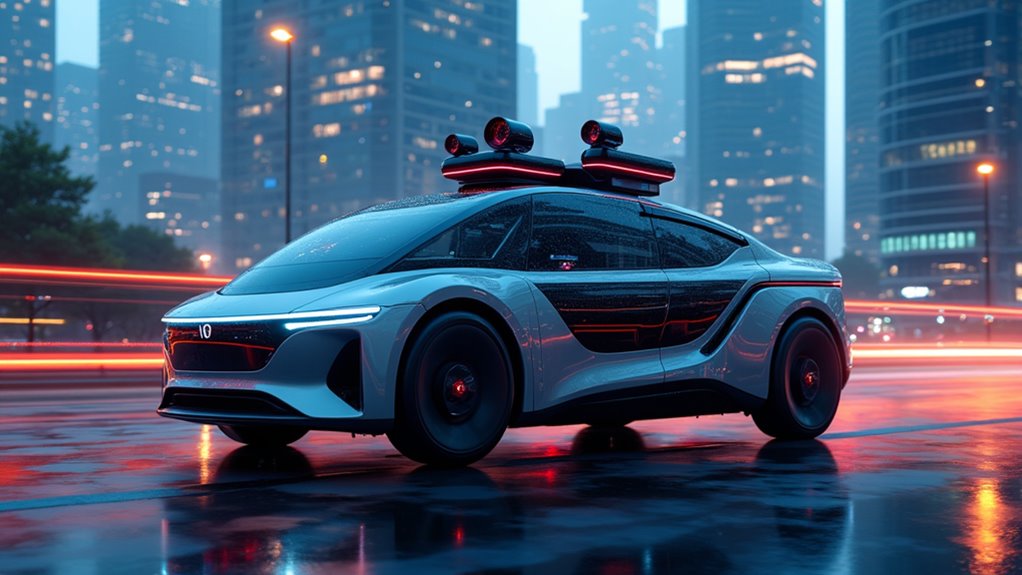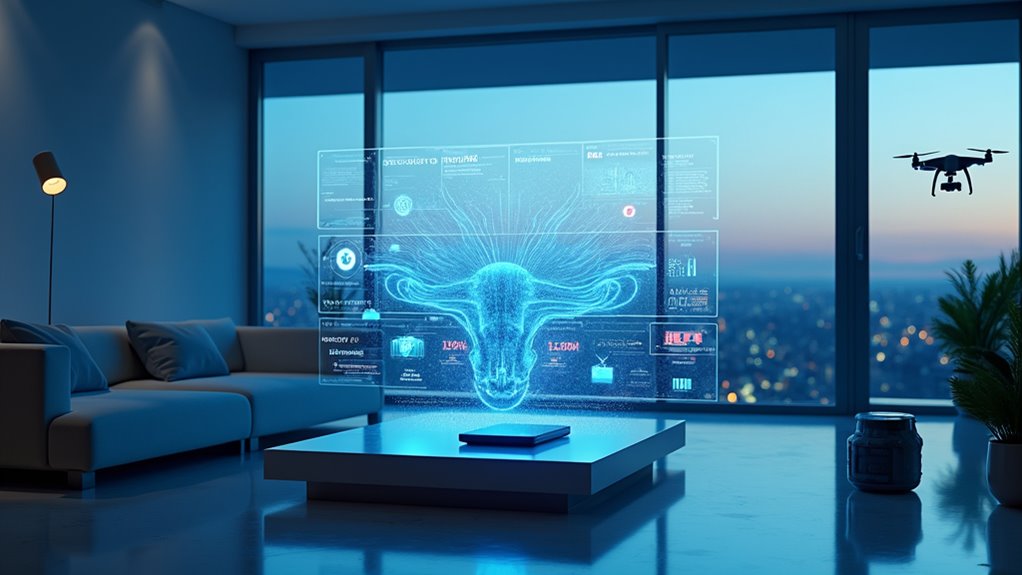While tech evangelists have long promised us flying cars, the real AI revolution in transportation is a lot more grounded – and it’s happening right now. The global AI transportation market, currently valued at a modest $3.25 billion in 2023, is set to explode to a whopping $10.54 billion by 2030. That’s not science fiction; that’s cold, hard cash being poured into making our vehicles smarter than some of our drivers.
North America is leading this AI transportation gold rush, and for good reason. They’ve got the infrastructure, the tech companies, and apparently, the burning desire to let computers take the wheel. The continent’s dominance isn’t just about bragging rights – it’s about being first in line for a technology that’s reshaping how we move from point A to point B. Major collaborations like Overture Maps Foundation between AWS and Meta are paving the way for innovation in the sector. The industry is particularly focused on truck platooning technology to achieve significant fuel efficiency gains.
The real game-changer? Autonomous vehicles. These self-driving marvels aren’t just cool toys for tech enthusiasts; they’re serious business. With advanced AI systems handling everything from real-time object recognition to navigation, these vehicles promise something humans have always wanted: the ability to scroll through social media while commuting. Modern autonomous vehicles utilize inertial navigation systems to create comprehensive 3D maps of their surroundings. Kidding aside, the productivity benefits are substantial.
The numbers tell a compelling story. With a CAGR of 18.3% from 2024 to 2030, this market isn’t just growing – it’s sprinting. Major automotive manufacturers are throwing money at AI technology like it’s going out of style, and they’re not doing it for fun. They’re betting big on a future where AI handles everything from traffic management to energy optimization.
What’s driving this growth? It’s not just the cool factor. There’s a genuine need for smarter transportation planning, better data management, and intelligent energy systems. Plus, let’s face it – humans aren’t exactly getting better at driving.
The integration of AI in transportation isn’t just about convenience; it’s about creating safer, more efficient systems that can handle our growing mobility needs. The future of transportation is AI-powered, and it’s arriving faster than a Tesla on Ludicrous mode.





